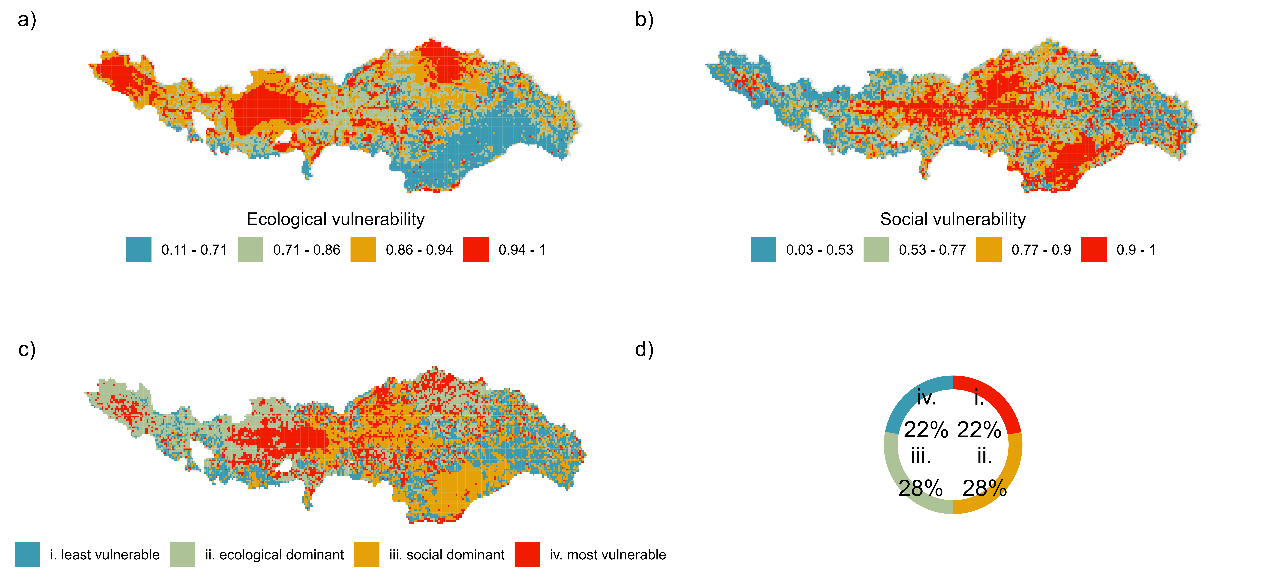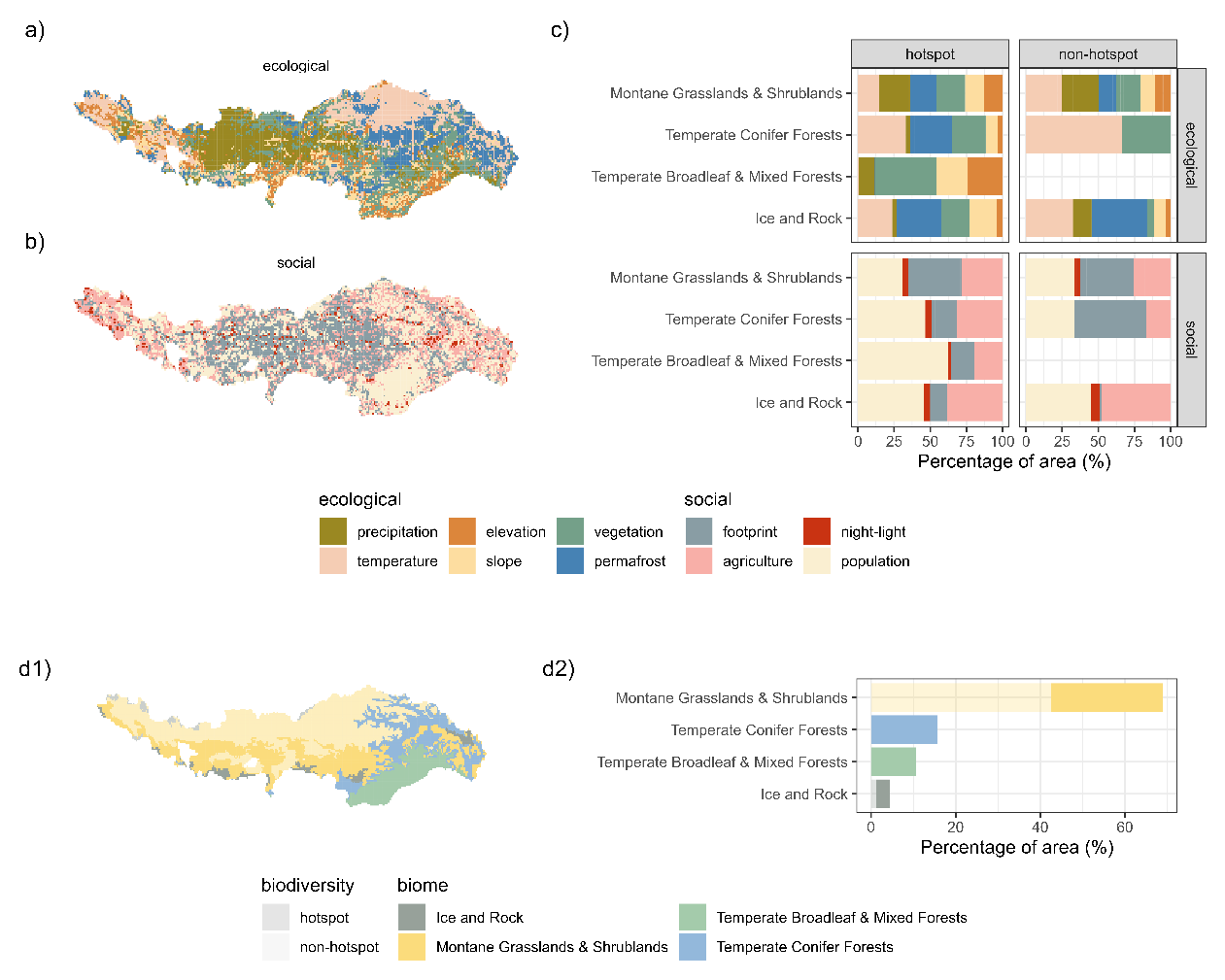Name:ZHANG Quanfa
Tell:
Email:qzhang@wbgcas.cn
Organization:Wuhan Botanical Garden
New Study Reveals Vulnerabilities in the Yarlung Tsangpo River Basin
2025-07-14
Biodiversity is essential for humanity's sustainable future, yet environmental changes and human activities are driving species extinction at an alarming rate worldwide. Yarlung Tsangpo River, originating in the Himalayas, flows through one of the world's most biodiverse yet sensitive regions. Understanding the vulnerability of this region is vital for global biodiversity and the regional conservation.
Researchers led by Prof. ZHANG Quanfa from Wuhan Botanical Garden utilized advanced Geographical Information System and big data analytics to conducted a comprehensive assessment of the ecological and social vulnerabilities of the region, including climate change, vegetation degradations, and human activities, etc.
Key findings indicate that temperature and precipitation variations are the primary drivers of ecological vulnerability, with highly vulnerable areas concentrated in the west and north part of the basin. In terms of the social aspects, population density and human activities emerge as significant threats, impacting 39 % and 31 % of the basin, respectively, with these vulnerabilities concentrated along the central river and in the southeast.
Crucially, the study identifies substantial conflicts between development and conservation, with 22 % of the entire area exhibiting high levels of both social and ecological vulnerabilities. For the protected areas within the global biodiversity hotspot, vegetation loss poses a greater immediate threat than climate variations.
This study offers a temporally dynamic and spatially explicit evaluation, empowering decision-makers with critical information needed to sustain the biodiversity of this vital ecosystem, with implications for global biodiversity conservation. This spatial-explicit results can inform future management decisions, enabling focused conservation investments and maximizing their impact.
The research is funded by the National Natural Science Foundation of China and the Chinese Academy of Sciences. Results have been published in Journal of Environmental Management entitled "Vulnerability of biodiversity to social and ecological stressors in the Yarlung Tsangpo River Basin".

Social-ecological vulnerability assessment for the Yarlung Tsangpo River Basin. Ecological (a) and social (b) vulnerabilities are estimated for each pixel, warmer colors indicate higher vulnerabilities, and cooler colors lower. The four classes are defined based on the social and ecological vulnerabilities (c) and their respective areas as a percentage of the entire basin (d) (Image by WBG)

The most vulnerable aspects of ecological (a) and social (b) vulnerabilities of the Yarlung Tsangpo River Basin determined for each pixel; and percentages of areas occupied by each aspect for being the most vulnerable aspect for ecological vulnerabilities and social vulnerabilities, summarized for areas divided by the biomes and the biodiversity hotspots (c). The division of the entire basin by the biomes and whether the area is within the global biodiversity hotspot (d1), and the percentages of areas of each division (d2) (Image by WBG)